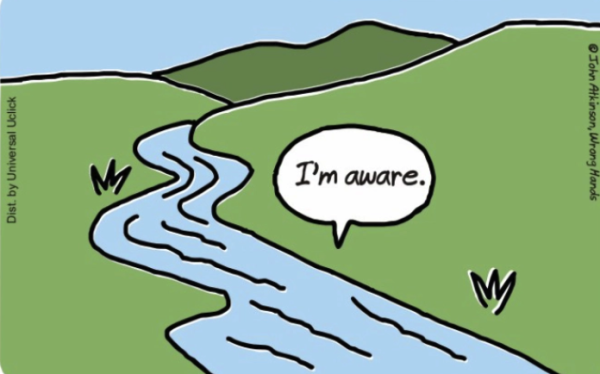A Gentrification Story Still Unfolding
My next-door neighbors have lived in their house since the ‘60s. I learned this when I
was seven; I climbed the wooden fence to their backyard and hopped in before I realized that I
was stuck. To be fair, their backyard looks pretty appealing to a seven-year-old, with all sorts of
plants, small gravel paths, and even a tiny pond. I had to knock on their back door to get out. But
before they let me go free, they took me inside to call my mom just to tell her where I was.
Inside I was stuck, again. My neighbors were old enough to be grandparents, but they didn’t
have any kids. So I became their grandchild. They told me stories about when they were younger
in this house. The neighborhood used to be for hippies, protesting against the Vietnam War while
sporting bright colors. They used to be hippies. They aren’t anymore; they grew up and remained
in the same neighborhood. As I later learned, they were the lucky ones. When housing prices
increased in the later twentieth century, many of the “hippies” who’d lived in our neighborhood
had been priced out, forced to leave due to the increase in rent and property taxes. God, I’m glad
I don’t pay rent or taxes. My next-door neighbors had been lucky; they had enough money to
stay in the same neighborhood while many of the friends were forced out. Okay, by now you can
probably see what I am getting at – gentrification. As most of you have already heard, it is an
epidemic plaguing Midtown right now.
Well, technically the neighborhood I was talking about was not Midtown. I was talking
about Ansley Park, which, as a woman selling $25 Music Midtown tickets to people who lived
Midtown informed me, is not technically part of Midtown. But to those living in Midtown,
Ansley Park is, for the most part, the richest part of Midtown. Multi-million dollar houses, a
great school district in Morningside, an expensive country club, the homes of two NBA players,
all that jazz. But Ansley Park may not be the only “rich part of Midtown” for long.
For those of you who live a sheltered existence in Buckhead and have not heard of
gentrification, gentrification is, in a nutshell, when the urban renewal of lower class
neighborhoods brings in more upper and middle class people who drive up the rent and drive out
long time, lower income tenets. Often the lower income tenets who are forced out are racial
minorities. That probably sounded a bit confusing to you, so here is gentrification in language
that anyone can understand (as defined by an Urban Dictionary user): “When a bunch of white
people move to the ghetto and open up cupcake shops.” I think that is a decent way to describe it.
Everyone has their own opinion of gentrification. Some argue that progress is necessary
and gentrification is just an unintended consequence that we have to live with. Others argue that
to stop gentrification we must have progress within limits. As per usual, I have my own opinion.
I do not think that progress must be stopped or even limited; I am all for more Starbucks and
Brunch restaurants. But the displacement of lower-income tenets is a real problem, and there
needs to be somewhere for these people to go.
From roughly five minutes of brainstorming and scanning the headlines of Google search
results, I have found that there are two real solutions to gentrification. The first that one being
stopping expansion and progress altogether. Not the most popular solution. Or the most practical.
As I just said, I am against this, and basically everyone else is against it as well. So what is the
other solution? Building new public housing.
If the solution is that simple then why is the government not building new public
housing? Well, that’s a complicated question. Over 8 decades ago, in the 30s, Atlanta actually
built the first public housing project in the US. By 1990, 10% of Atlanta lived in public housing
– the highest percentage in the nation (I can’t tell if that’s a good or bad thing). But the housing
projects of the twentieth century did much to concentrate poverty and anchor inequality in the
urban society, and the government realized this. Around the time of the ’96 Olympics, Atlanta
began tearing down and privatizing their public housing. This did not become a serious problem
until the last few years. The Old Fourth Ward, a neighborhood just south of Midtown, has
already been permanently changed in just the past decade because of the belt line and Ponce City
Market. Turns out that all the pictures in front of that polka dot wall have an impact after all.
While the Old Fourth Ward used to be a predominately black, lower-class neighborhood, it is
now home to Atlanta’s white, hipster scene as anyone who has been to Ponce City Market can
attest to. Home prices and rent are increasing more near the belt line than in any other part of
Atlanta (you can fact check that by the way).
The BeltLine leaves a wake of gentrification in its path, forcing old tenets out and new
tenets in. This is not say that the BeltLine is all bad. As I said earlier, progress is good, even if
that progress is overpriced arugula bowls and pianos next to paved bike paths. But Atlanta has
not yet given a real solution to the problem of gentrification in the neighborhoods around the
BeltLine. They have built no new public housing and only asked private housing to set aside
some units for “affordable housing.” To me this sounds like using duct tape to hold your bumper
on your car. Atlanta is going to spend multiple billion dollars on the BeltLine before it is
completed, but is seriously underinvesting in public housing, an area where funding is
desperately needed. If gentrification is going to be addressed, and it must, then it should be
addressed in the proper manner – by building public housing near the BeltLine so that the lower-
class have somewhere to go.


